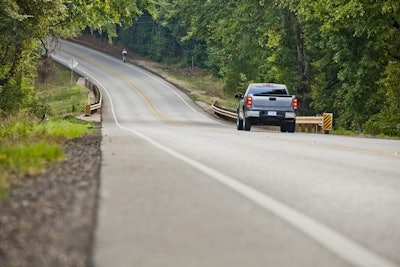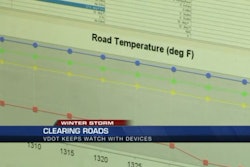Tighter vegetation management budgets call for hard-working strategies.

It’s a common conundrum — as challenges controlling invasive weeds and brush increase, vegetation management budgets decrease. Couple that with overstretched roadside crews and rising operational costs and you have an epic war with weeds.
To learn how vegetation managers are prevailing against these challenges, I spoke with Todd Rowley, transportation maintenance coordinator with the Michigan Department of Transportation. He offered the following tips to help other managers find resourceful ways to accomplish goals.
1. Identify priorities.
“Roadside safety is our top priority,” says Rowley. “That means keeping the guardrail visible year-round. We currently follow a bareground program, but we are testing selective weeding with products like DuPont Perspective to control kochia and other tall species that can block sightlines.”
Selective weeding helps maintain desirable grasses to prevent erosion, maintains aesthetics and can be less costly than bareground treatments.
2. Know your options.
As vegetation management practices evolve to accommodate new or resistant weed species, so do weed-control technologies.
“It’s critical to be familiar with current offerings, labeled rates and target species,” says Rowley. “When budgets are tight, there’s little margin for error. Matching the right tools to the task is the most efficient way to achieve the results you require.”
If you haven’t reviewed your herbicide options for a few years, you may want to see what’s currently available. The efficacy of herbicides introduced recently can make a significant difference in your vegetation management program.

Rowley values the expertise of product sales representatives.
“These folks have the latest information and are eager to share. We invite our DuPont representative to our applicator training sessions to discuss new technologies and share trial results from the field. Getting this information doesn’t cost a thing and helps us make the right decisions for our programs.”
4. Manage crew morale.
When roadside crews are pulled in multiple directions, maintaining motivation is critical. Rowley says hands-on training and regular communication go a long way toward boosting morale.
“Hosting applicator training days and ensuring our crews are equipped with the right tools for the job helps inspire confidence and determination.”
5. Track productivity.
Application logs are a valuable tool for monitoring and adjusting productivity. Applicators should keep detailed reports of all tasks, including crew size, equipment used, acres covered, and specific start and end times.
“With that information, we’ve been able to calculate productivity from crew to crew and pinpoint which equipment and crew setups are best for each task,” says Rowley.
Accomplishing more with less is a trend that shows no sign of slowing — and that’s not such a bad thing, according to Rowley.
“The emphasis on productivity isn’t going away, and I don’t think it should. We’re changing the way we do business in a positive way.”
For more ideas on how to maximize productivity in your vegetation management program, visit landmanagement.dupont.com.
About the author: Dan Zapotok is the portfolio manager for DuPont Land Management, where he is responsible for products within the vegetation management, railroad and forestry markets. Zapotok has worked with DuPont for more than 20 years, holding positions in operations, project management and marketing. He has a bachelor’s degree from Pennsylvania State University.














